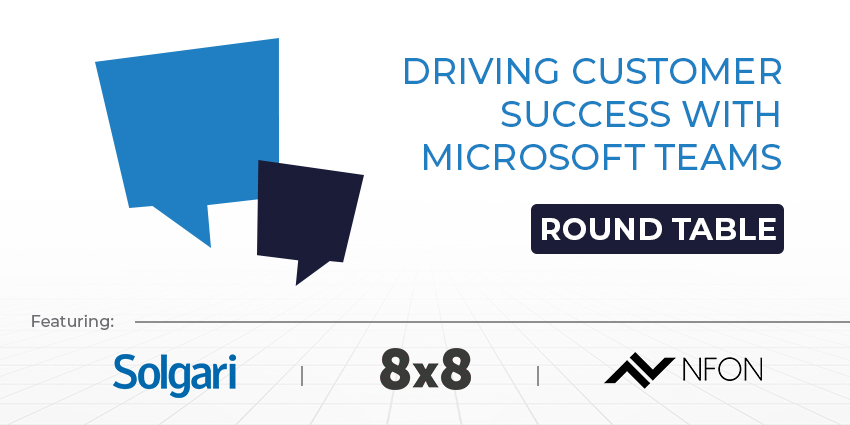We’re far past the days when hybrid working was the “future” of the workplace or even a half-baked experiment. Flexible work is the standard now. It’s what employees expect, and it delivers benefits for everyone; better work/life balance, lower operating costs, and improved access to global talent. But there’s still a sticking point: hybrid work security.
You’ve got employees logging in from home networks, airports, and coworking spaces. Sometimes, they use company devices, sometimes not, and sometimes from countries with very different data laws. All of this is now part of your attack surface.
In 2025, nearly 64 percent of businesses globally are operating in hybrid mode. But hybrid work security is nowhere near where it needs to be. The visibility gaps, the policy loopholes, the patchwork of tools; none of it scales well in a distributed world.
The result? 65 percent of employees admit to bypassing cybersecurity policies to get their jobs done. Shadow IT is one thing, but now we’ve got shadow AI, entire workflows being built around unvetted tools like ChatGPT or Claude, with no paper trail and no protections in place.
This isn’t just an IT security issue anymore. It’s a legal risk, a procurement headache, and a productivity bottleneck. It’s forcing enterprise leaders to ask tougher questions: How do we secure hybrid work without making it harder for people to do their jobs?
What Is Hybrid Work Security?
Security has always been important in the enterprise, but hybrid work changes what security actually means. Forget the perimeter. In a hybrid setup, there isn’t one. Users access sensitive data from devices and locations your legacy tools were never built to handle. What used to be the company network is now a collection of identities, endpoints, cloud services, and edge cases.
That’s where hybrid work security starts: with the assumption that nothing is inherently safe, not the device, not the network, not even the user. Every access request has to earn its trust, continuously. This is the logic behind Zero Trust Network Access (ZTNA), and why it’s rapidly becoming table stakes for any serious enterprise.
But ZTNA alone doesn’t solve everything. You need to know what devices are being used (Unified Endpoint Management), you need smart policies at the cloud edge (SASE, CASB, SWG), and you need to make sure no one’s slipping through the cracks with weak credentials (MFA). Stopping attackers isn’t enough – you need to eliminate your blind spots.
At the same time, this can’t become a productivity tax. The best secure hybrid work strategies can’t add friction for end users. Everything needs to work silently in the background, verifying users and tackling risks, without holding people back. AI is starting to play a role here too, helping to flag anomalies, automate access decisions, and keep things moving without creating bottlenecks.
The Hybrid Work Security Challenges Facing Enterprises
Hybrid work wasn’t designed with security in mind. It just appeared. One day, your IT team managed a few office floors. Now they’re responsible for home offices, airport lounges, hotel networks, and the occasional café Wi-Fi log-in.
It’s not about locking things down anymore. It’s about keeping things moving without opening the door too wide. That’s where cracks are starting to show.
Shadow IT and Shadow AI
You know the problem: people are under pressure to work faster, not necessarily safer. They’re not trying to break rules; they’re just trying to be more productive and efficient, but they don’t always want to use the tools you’ve pre-approved in advance. So they paste sensitive info into ChatGPT, or build spreadsheet macros with AI tools nobody vetted.
About 73 percent of knowledge workers say they use AI tools every day. But only 39 percent of companies have actual AI governance policies in place. Even when those policies exist, employees end up ignoring them because the official tools they have are slow, confusing, or not aligned with their work.
Shadow AI is already replacing Shadow IT as the next big problem. Especially in regulated industries. Because if your people are uploading client data into unapproved bots, you might already be in the midst of a breach.
The Password Problem That Won’t Go Away
Enterprises have thrown a lot at phishing: MFA, biometrics, training videos, but the attacks keep coming. Microsoft blocks about 4,000 password attacks per second. Most of them work the same way: trick someone into clicking a link, or wear them down until they approve a login they shouldn’t.
MFA fatigue isn’t making things any easier. If people get prompted five times a day, they stop reading the prompts. They simply click “yes.” That’s where attackers slip in.
Plus, many employees end up using the same password for everything to save time. As the number of tools team members have access to, like collaboration apps, contact center systems, and productivity apps, continues to increase, that means more windows open up for criminals.
Devices You Can’t See, Risks You Can’t Stop
In most hybrid setups, IT always has a question in the back of its mind: What’s actually on the network right now? It’s not always clear. Someone logs in from their personal laptop, or another user connects through a mobile hotspot.
Some employees don’t even bother registering a new device when they bring it into an office. They connect it to a network and hope for the best.
A recent study found that 48 percent of companies suffered a breach linked to an unmanaged device. Many IT leaders will admit they’re not totally sure what all their endpoints are; not because they’re lazy, but because they can’t see them.
Compliance Is More Complicated than Ever
When people work from anywhere, data travels, too. Legal files, financial reports, patient records; they all end up in email threads, Slack channels, or personal cloud drives.
That’s how good people accidentally break big rules. HIPAA, GDPR, FINRA, none of them were built for this kind of sprawl. But you’re still expected to follow them and explain what went wrong when something slips.
Then there are new compliance standards evolving every day, new regulations to consider about digital communication governance, AI usage, and data storage.
Too Many Tools, Not Enough Control
Most companies didn’t plan for hybrid. They reacted to it, which means the security stack grew fast and sideways. Different teams bought different tools. Now, there are 70 platforms and 15 dashboards, and nobody’s really sure which one is in charge.
This is inefficient and risky. Alerts get missed, and permissions go unchecked. The people who are supposed to keep things secure end up babysitting five platforms that don’t talk to each other.
Fragmentation is a visibility problem, and visibility is the only way to stop bad things before they get worse.
Hybrid Work Security Solutions: What’s Working for Enterprises
When hybrid work started to take off, a lot of companies did what they could with the tools they already had. A VPN here, a firewall rule there, maybe a rushed rollout of mobile device management. But now we’re past the quick fixes.
The people logging in from home aren’t temporary anymore. The work they’re doing remotely isn’t lower-risk. In many cases, it’s more sensitive.
So what can companies use now to make hybrid work security feel less like a moving target?
Zero Trust Network Access (ZTNA)
ZTNA is the first serious shift in thinking most companies need to make. It’s not a product, it’s a principle: Don’t trust anything or anyone until you verify. Then verify again.
In a Zero Trust model, there’s no “inside the network” that gets automatic access. Every request is treated like it’s coming from the internet, even if it’s coming from your own employee. That means segmenting systems, applying least-privilege rules, and constantly checking device posture.
Microsoft, Cisco, and Palo Alto have strong ZTNA solutions, but lightweight players like NordLayer also work well for teams that need to move quickly.
Unified Endpoint Management (UEM)
If you only manage company-issued laptops, you’re not seeing the full picture. People are working from tablets, phones, and personal devices, especially in industries with field teams or flexible contracts.
UEM platforms bring everything together: mobile, desktop, BYOD, IoT. The good ones let you set policies across all device types, wipe them remotely if needed, and keep software patched automatically.
This is about more than control; it’s about reducing the number of calls from people asking, “Can I use this to log in?” If the device meets the policy, it’s good. If not, the system says no.
Companies like NTT Communications have seen incredible results from this unified model. They use solutions like Microsoft Intune to manage more than 40,000 devices in a hybrid setup and enable unified device management and ZTNA at scale.
Multi-Factor & Identity Protection
MFA isn’t exciting compared to all the AI-powered hybrid work security solutions we’re seeing lately. But it’s still essential. Passwords aren’t enough, and attackers know it. The key now is to make MFA as seamless as possible. That means fewer prompts, more context-aware access, and support for passwordless options like biometrics or hardware keys.
If your MFA system is annoying people five times a day, they’ll get tired. When they get tired, they’ll start clicking “yes” without thinking. That’s when you get breached.
So if your MFA policy hasn’t been reviewed in a while, it might be time to rethink how and when it actually kicks in.
SASE, CASB & SWG
In a hybrid world, most traffic goes straight to the cloud. That’s why legacy network security tools struggle—they try to inspect traffic that doesn’t go through them.
That’s where Secure Access Service Edge (SASE), Cloud Access Security Brokers (CASB), and Secure Web Gateways (SWG) come in. Together, they:
- Filter and inspect internet traffic, even off-network
- Enforce policies on cloud services (like blocking personal Dropbox uploads)
- Detect risky behavior and automate responses
One global manufacturer used Fortinet’s SASE solution to roll out secure hybrid access to 11,000+ users across 50 countries, while actually reducing complexity and consolidating tools in the process. The system combines everything businesses need to improve visibility into their ecosystem and keep teams secure without headaches.
AI-Powered Monitoring
With so many access points, devices, and cloud apps in play, you’re not going to catch every issue manually. That’s why AI tools are becoming increasingly valuable.
Today’s smarter platforms use machine learning to detect risky behavior: odd login patterns, unusual file transfers, unexpected device activity. They’re getting better at filtering signal from noise, so you’re not drowning in false alarms.
Some tools are even starting to auto-remediate: flagging users for reauthentication, restricting access, or notifying the right admin without needing a full incident ticket. In one success story, a company found that proactive monitoring reduced issues for employees by 40 percent and cut support escalations to Microsoft (for Teams) by 20 percent.
Security Solutions Focused on UX
If the tools used for hybrid work security slow people down too much, they’ll find a way around them. That’s why modern platforms are starting to look a little different. They’re:
- Lightweight (no bulky installs)
- Context-aware (fewer pop-ups, more intelligent prompts)
- Designed to blend into how people already work
Logitech’s approach to hybrid meeting spaces is a good example of how the right hardware and tools can reinforce security without disrupting the user experience. Their work on seamless video collaboration helps ensure hybrid users can connect securely, without the usual headaches.
The Enterprise Hybrid Work Security Roadmap
Most companies didn’t plan for hybrid work; they just had to adapt to it. A few laptops went home, and then a few more. Now the office is half-empty, VPN usage is through the roof, and your security team is stuck navigating device alerts, user permissions, and shadow tools they didn’t approve.
If this sounds familiar, you’re not behind. You’re where most companies are. The good news? There’s a way to fix it.
Here’s a step-by-step approach to building a secure hybrid work strategy that holds up under pressure.
1. Start with Risk, Not Tech
Before you throw another tool at the problem, get a clear view of what you’re actually trying to protect. That means mapping:
- Who your users are (full-time, part-time, contractors)
- Where they work (home, office, field, rotating sites)
- What devices they use (and which ones you can’t see)
- What kind of data they touch (regulated, sensitive, proprietary)
- Which workflows rely on third-party tools
You’re not just listing assets, you’re identifying vulnerabilities. Remember, those vulnerabilities will evolve over time. Check back regularly.
2. Define Security Policies That Match Reality
You can’t secure hybrid work with on-premises policies from 2018. Your access controls, data handling rules, and escalation paths need to reflect how people actually work now. That includes:
- BYOD usage (and where to draw the line)
- Personal cloud accounts
- AI tools (what’s allowed, what’s not, and how to tell)
- Access based on risk level (e.g. reauthentication if someone logs in from an unexpected location or device)
This is also where you build your “trust model”, who gets access to what, under which conditions, and what triggers a lockdown.
3. Choose Vendors That Align with Your Situation
You’re not looking for quick fixes. You’re building a long-term security model. So when you evaluate security vendors, look for ones that:
- Support Zero Trust architecture (across identity, endpoints, and cloud)
- Play well with your existing UC and collaboration tools
- Offer deep visibility across remote devices and apps
- Don’t make the end-user experience worse
Pay attention to where companies are innovating too. For instance, Theta Lake is embedding new features into its security solution to help companies monitor human and AI risks at the same time.
4. Pilot in the Messiest Parts of the Business
Don’t wait for a perfect rollout plan. Start with departments that are already pushing the limits, like remote legal teams, field-based sales organisations, and contract-heavy finance groups.
Set goals, watch for what breaks, adapt quickly, and build in a feedback loop, collecting insights regularly from every team member. What actually helps reduce risk, and what causes your team members to start looking for workarounds?
This kind of piloting gives you real-world friction points to fix, and real advocates when you expand the rollout.
5. Make User Training Actually Useful
If your security training is still a once-a-year compliance video, it’s probably not helping. Hybrid users need bite-sized, context-aware education that sticks. They need phishing simulations, just-in-time reminders, and alerts that explain the “why,” not just the “what.”
Most importantly: make it easy for users to report suspicious activity without jumping through hoops. They’re your early warning system. But only if they know how to use it.
As always, be ready to adapt. Hybrid work isn’t static. People move, tools evolve, and threats shift. So, your security strategy and training strategy have to stay flexible.
What Happens When Hybrid Work Security Works
When security works in a hybrid setup, it’s not invisible. You feel it. The alerts go down. The late-night fire drills stop. People stop calling IT to ask if they can open a document on their iPad from the airport.
That’s exactly what companies like Hello Sunshine (yes, the media company co-founded by Reese Witherspoon) did by standardizing on Cisco’s Webex ecosystem. They needed secure collaboration across a distributed creative workforce, and ended up simplifying IT management while improving productivity. Here’s what happens when you actually secure hybrid work:
- You spend less time fighting fires: There’s the obvious stuff: fewer phishing clicks that lead to big cleanups, fewer ransomware scares, fewer compliance emails. If you’ve ever had to write a breach report to legal, or explain to leadership why something “fell through the cracks,” you know how much time that eats. When hybrid work security is in place, that time goes somewhere better.
- Compliance stops being a scramble: The scary part of compliance isn’t the rules; it’s not knowing if you’re actually following them. When you’ve got the right controls in place (encryption, access logs, retention policies), audits feel less draining.
- Your team stops fighting the tools: Most people aren’t trying to make your job harder. They just want to do their job with the tools they prefer. When the right systems are in place, users stop trying to work around the guardrails and start working with them.
Security isn’t about prevention alone; it’s about knowing what’s going on; which devices are connecting, which apps are being used, and where your sensitive data is actually moving.
When the right telemetry is in place and the data actually makes sense, you stop guessing. That’s where confidence comes from.
The Future of Hybrid Work Security
Hybrid work isn’t “new” anymore. But the tools we’re using to protect it are changing. Just some of the things enterprise buyers are starting to see:
- Growing AI control: Employees are using AI more than ever—but not always the AI your C-suite approved. Monitoring solutions are beginning to make it easier for businesses to track all kinds of AI usage and where the risks are.
- Adaptive security: The next wave of security tools is less about static rules and more about patterns. It involves watching how people behave and adjusting the rules around them. The goal isn’t to catch everything. It’s to spot the risky stuff early and act fast when it matters.
- Cyber meets the real world: Security is now about more than software. Hybrid setups blur the lines. Digital access is tied to physical spaces, offices, coworking sites, and home setups with smart locks and shared routers. Companies are starting to bring physical and digital security together: badge data feeds into access systems, and location awareness shapes login rules.
Culture is shifting too. You can have all the tech in the world, but if your team doesn’t believe in the process it won’t stick. We’re seeing more orgs shift toward “embedded security,” where the tools teach as they protect.
That looks like just-in-time alerts, context-aware warnings, and policies written in plain English. It’s less “deny access” and more “hey, here’s why we’re flagging this.”
Mastering Hybrid Work Security
Hybrid work isn’t a trend. It’s the way things are now for your team, your clients, your partners. People work from wherever they are, using the tools they have, on the timelines that make sense for them. You can’t reverse that.
What you can do is build systems that make that flexibility safer; not with policies and PowerPoints, but with real controls that work when nobody’s watching, that stop bad things without slowing everything else down.
Hybrid work security isn’t about locking everything down. It’s about creating enough structure so that the right people can move fast, and the wrong people can’t move at all.
You don’t have to overhaul everything at once. Start where things already feel risky. Pilot where the stakes are high but the workflows are flexible. Work with vendors who know that “hybrid” isn’t going anywhere.
Remember: the most secure systems in the world won’t help if your people don’t understand how to work with them. So build guardrails, not roadblocks. Talk to the teams using the tools, and design systems that assume people want to do the right thing, because most of them do.







